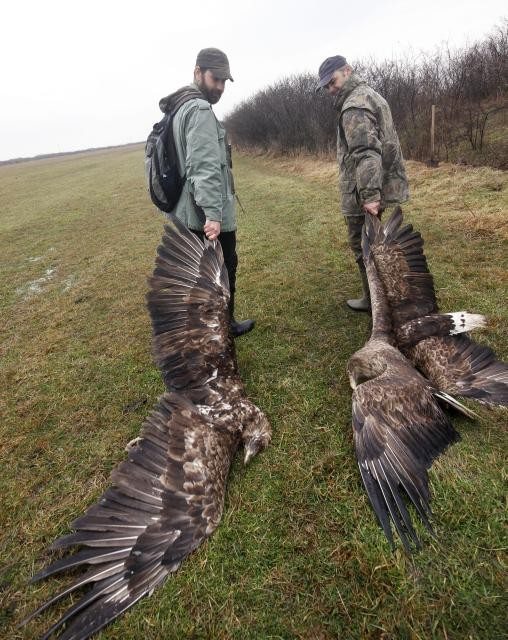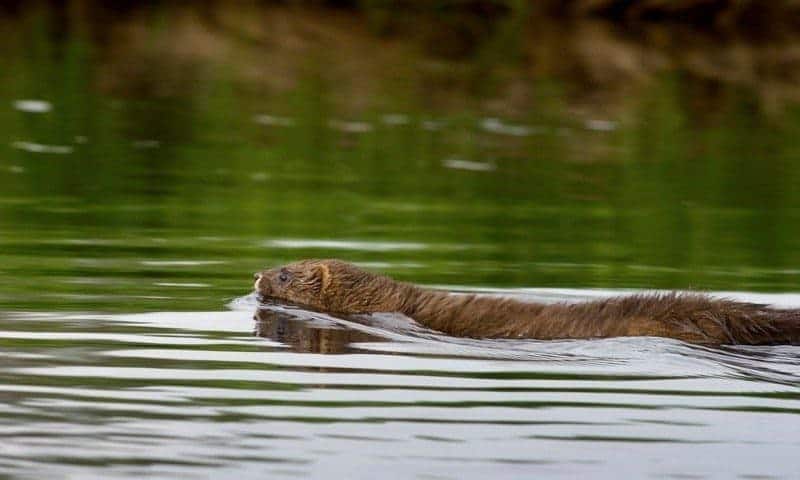The Killing Fields for migratory birds: Southern Europe
Migratory birds play a critical role in nature
Awhile ago, I wrote about how in Europe, land management practices were contributing to the decline in many common songbirds. However, European birds face an even greater threat and that is the illegal killing and taking of birds in the Mediterranean region as they make their way back to Europe from Africa. It is estimated that there are 20 locations throughout the Mediterranean that may be responsible for eight million birds being illegally killed or taken each year. This is a staggering number.
Please also read: Deer feeding puts birds at risk
In the paper ‘Preliminary assessment of the scope and scale of illegal killing and taking of birds in the Mediterranean’, published in the scientific journal Bird Conservation International, authors present a detailed analysis of how many birds and of which species are impacted, where the 20 worst locations are and why different species are targeted in each country.
They discovered that 450 species different species are estimated to be illegally killed or taken alive in the Mediterranean region per year, mainly for food (to be eaten as a delicacy or sold for profit), sport and for use as cage birds or hunting decoys. Given the illegal nature of the killing, the number of birds killed could be even higher, as much as 11 million. So who is doing the killing?
These 20 places are found in just four countries: Cyprus, Egypt, Lebanon and Syria. They include the Famagusta area of Cyprus, where 400,000-1 million individual birds are illegally killed or taken each year, and the El Manzala area of Egypt, where 30,000-1.1 million individual birds are illegally killed or taken each year.
The highest estimates of migratory birds illegally killed or taken in the Mediterranean region were for Italy (3-8 million birds), Egypt (300,000-11 million) and Syria (3-5 million), while the density of illegal killing/taking was highest in Malta (18-667 birds per year per sq km), Cyprus (146-351 birds per sq km) and Lebanon (161-335 birds per sq km).
It is disturbing that despite the EU Birds Directive, half of the top 10 countries with the highest levels of illegal killing are Member States of the EU. What is the point of having such directives if they are not implemented at the national level and the worst offending countries are not held accountable?
The birds affected by illegal killing include the Blackcap (1.2-2.4 million individuals per year), European Turtle-dove (300,000-900,000 individuals per year) and Song Thrush (700,000-1.8 million individuals per year), among many others.
The data were collected by BirdLife Partner organisations across the region using a variety of sources, including targeted monitoring data, police records, publications, reports and expert opinion. In many cases, the numbers were extrapolated from data or estimates of the number of mist-nets, shooting incidences, recoveries in animal hospitals and rehabilitation centres, and illegal ‘limesticks’ used to trap birds with sticky glue.
Addressing this issue requires coordinated efforts as all levels of government and stakeholder groups and some progress has been made. National action plans to tackle illegal killing have recently been developed by a wide range of stakeholders in Egypt/Libya and Cyprus, with the aim of strengthening legislation and its enforcement, improving monitoring, and supporting efforts to take action for individual species. Although, without addressing the cultural root of this activity and making it socially unacceptable, I believe strengthening legislation and enforcement will not be enough.
Check out this graphic illustration of the scale of the problem. Here are some further links concerning illegal killing of migratory birds:
- Convention on the Conservation of Migratory Species of Wild Animals
- Petition: Stop the illegal killing of birds in Southern Europe









It is a very sad situation indeed and the numbers are so shocking. I agree with you Norman, why the wanton destruction of these birds is not seen as shameful. i will continue to post on this subject.
What a pity that so many people do not regard wildlife with any appreciation of their being just an animal or bird with it’s own beauty ! Is the wanton destruction of these creatures so important for the ego of the hunter.
One could support the killing if it was to feed starving people but this is obviously not the case.
Norman Doak Johannesburg South Africa
As Italian, it is for me particularly disturbing, other than very embarrassing and shameful, to see my Country in a “leader” position in this hit parade of slaughter.
It is also sad to see, in the map, the Po delta area among slaughter sites. Po Delta hosts two Regional Nature Parks and it is a UNESCO MAB Reserve. It should be a paradise for birds, not a hell!
Unfrtunately, as pointed out by Italian NGO Pro Natura about the wolf fate (and true also for birds, I think), there are not good news for the future. The dismemberment of State Forestry Corp cannot help to stop this slaughter.
As if not enough the illegal hunting, in past some Regions had several times requested derogations to EU regulations on birds.
This is shocking! I knew about the shooting for fun or eating, but these numbers are terrible! Adding up to the loss of habitat for there migratory birds in Northern European countries (and loss of food by poisoning the insects), the future looks very grim indeed.
And nobody seems to notice, at least the general public is unaware of what is happening, I am afraid.
This huge problem should be addressed international on the highest level!